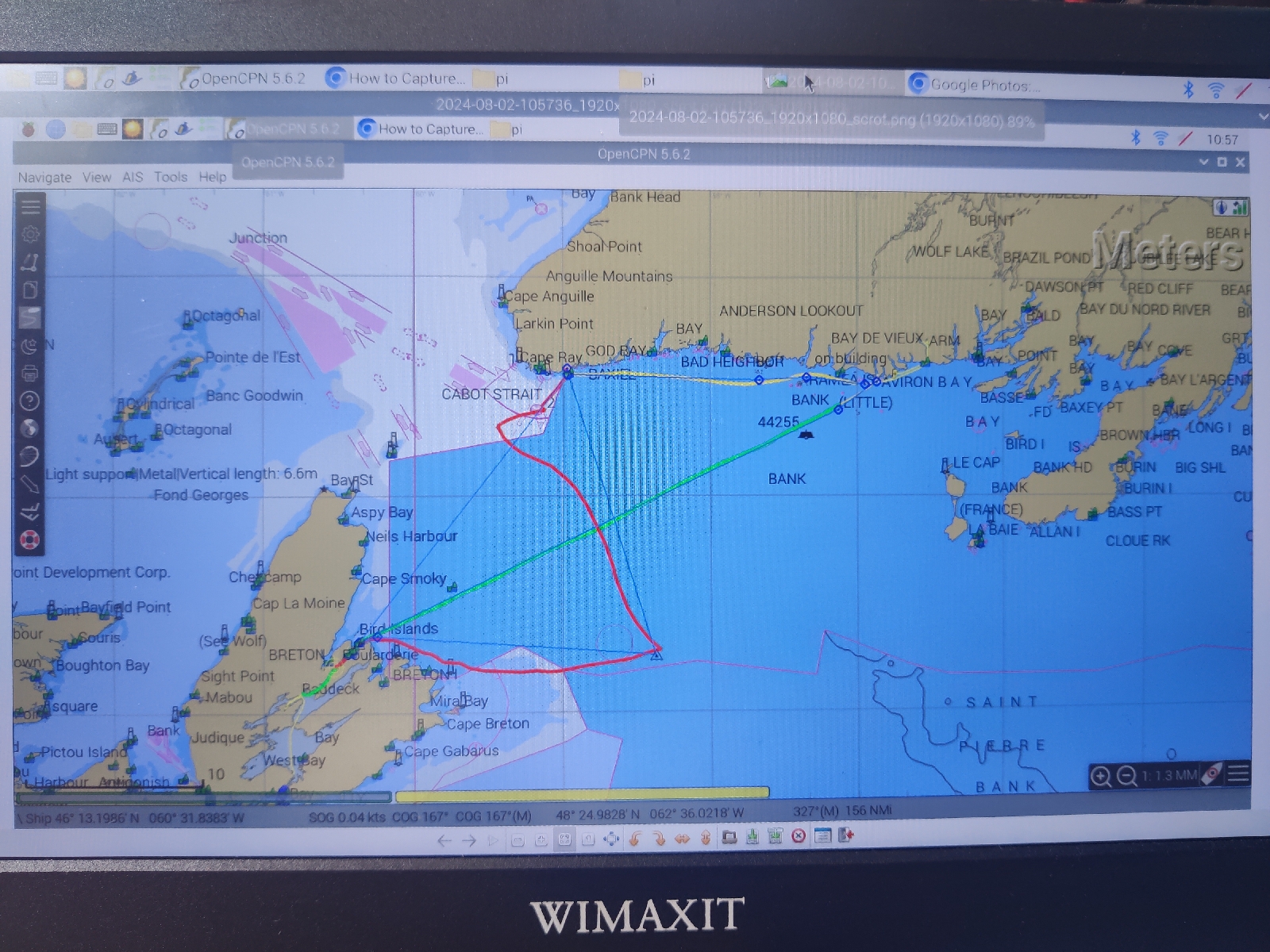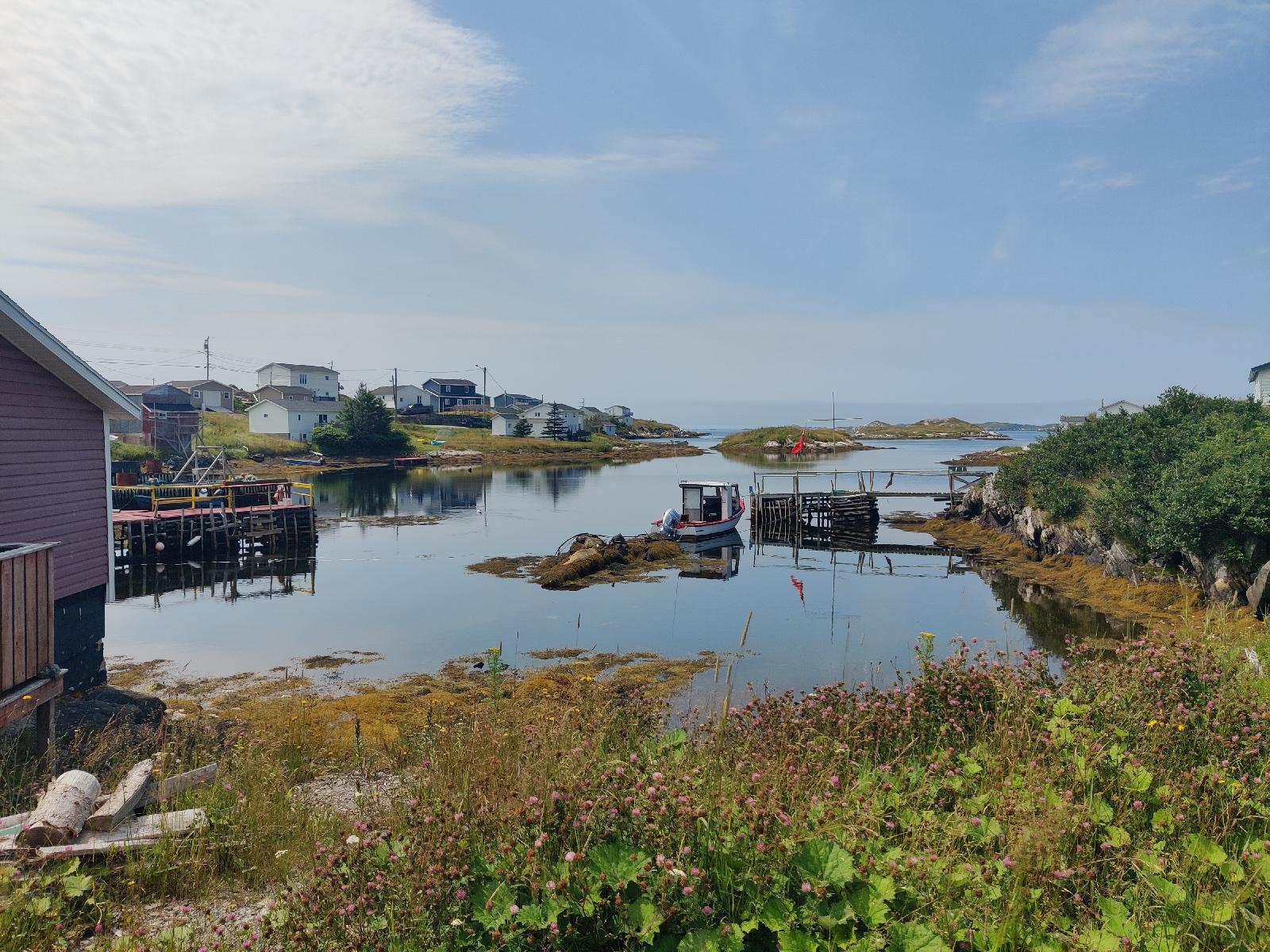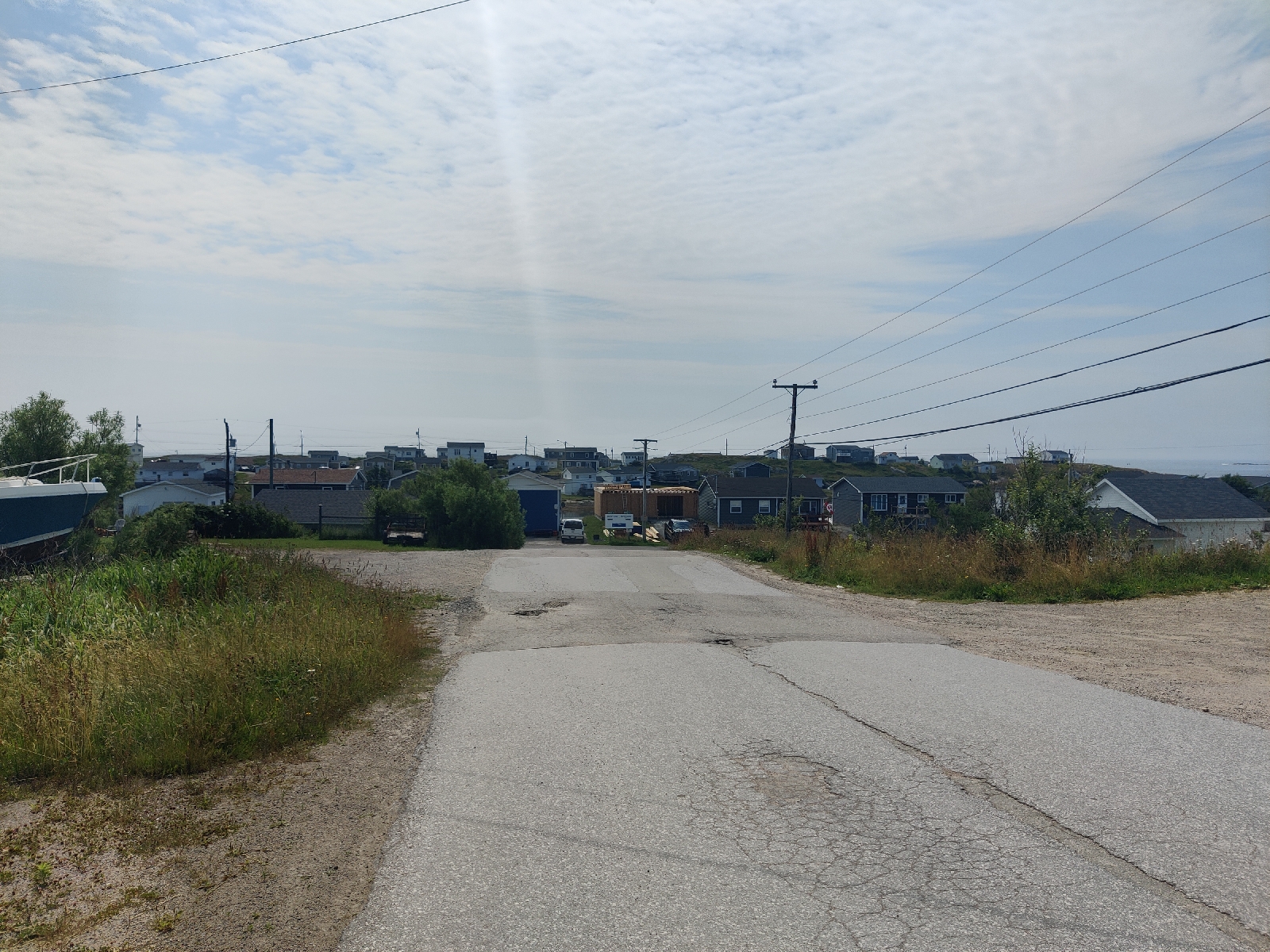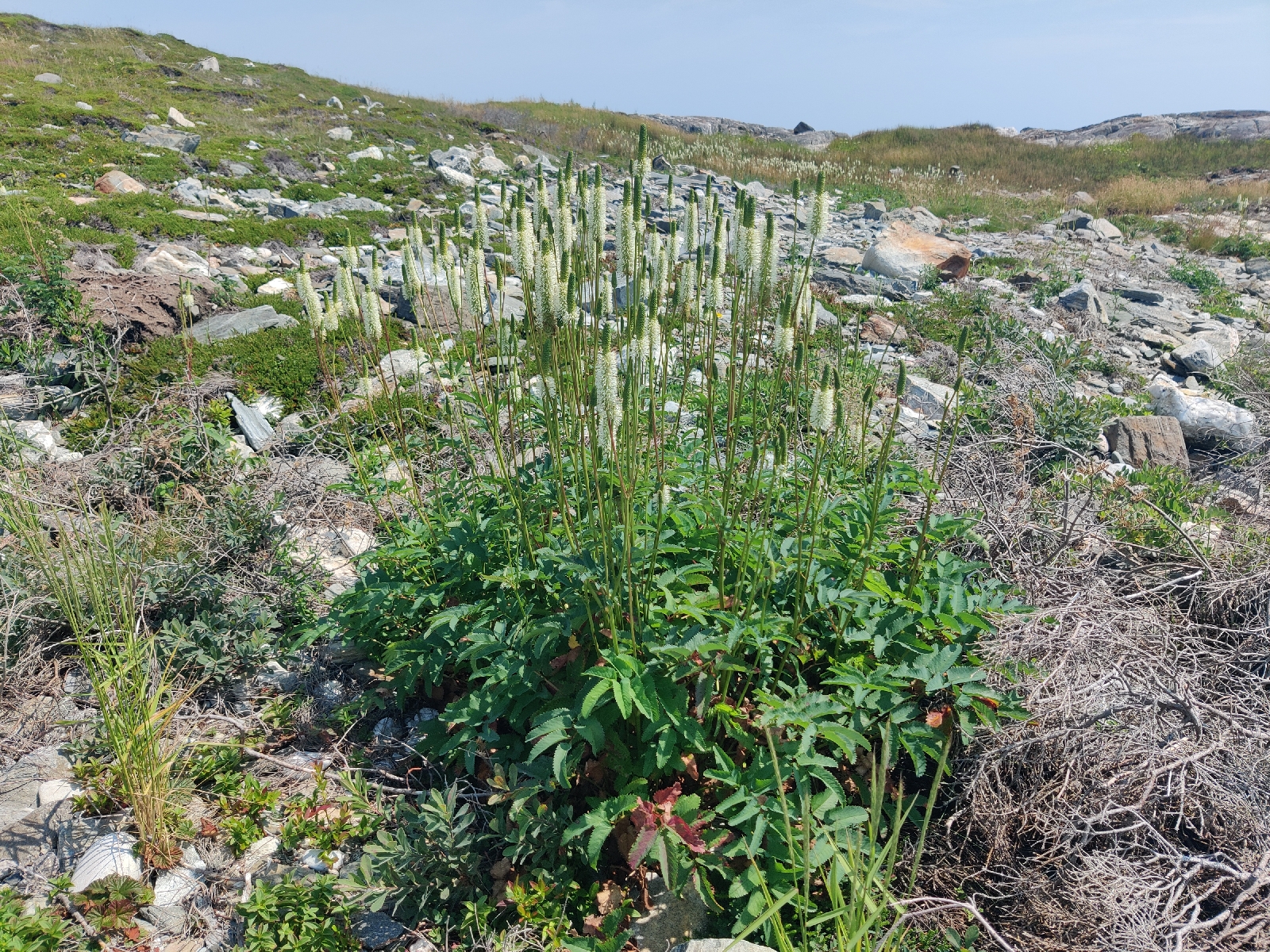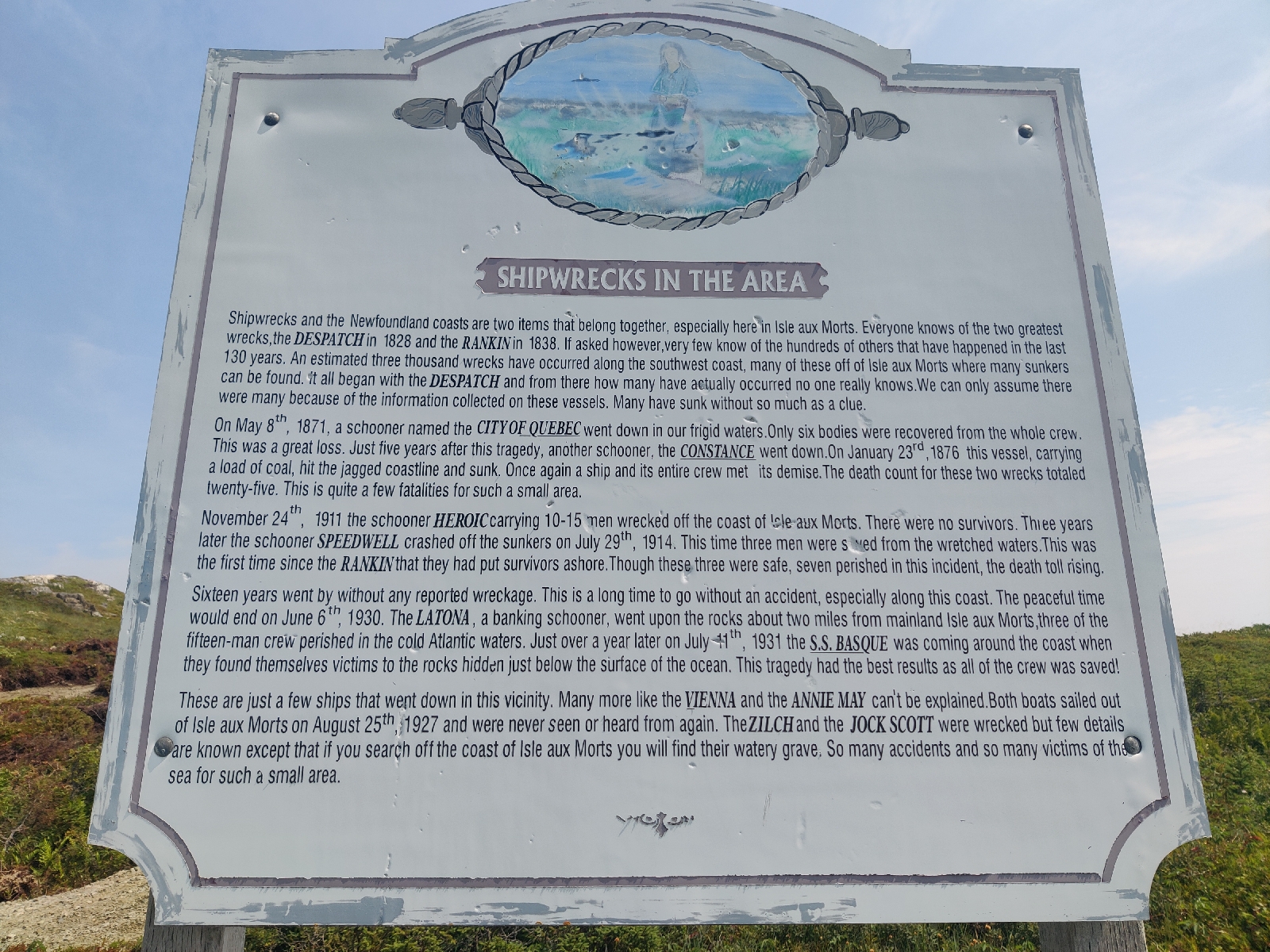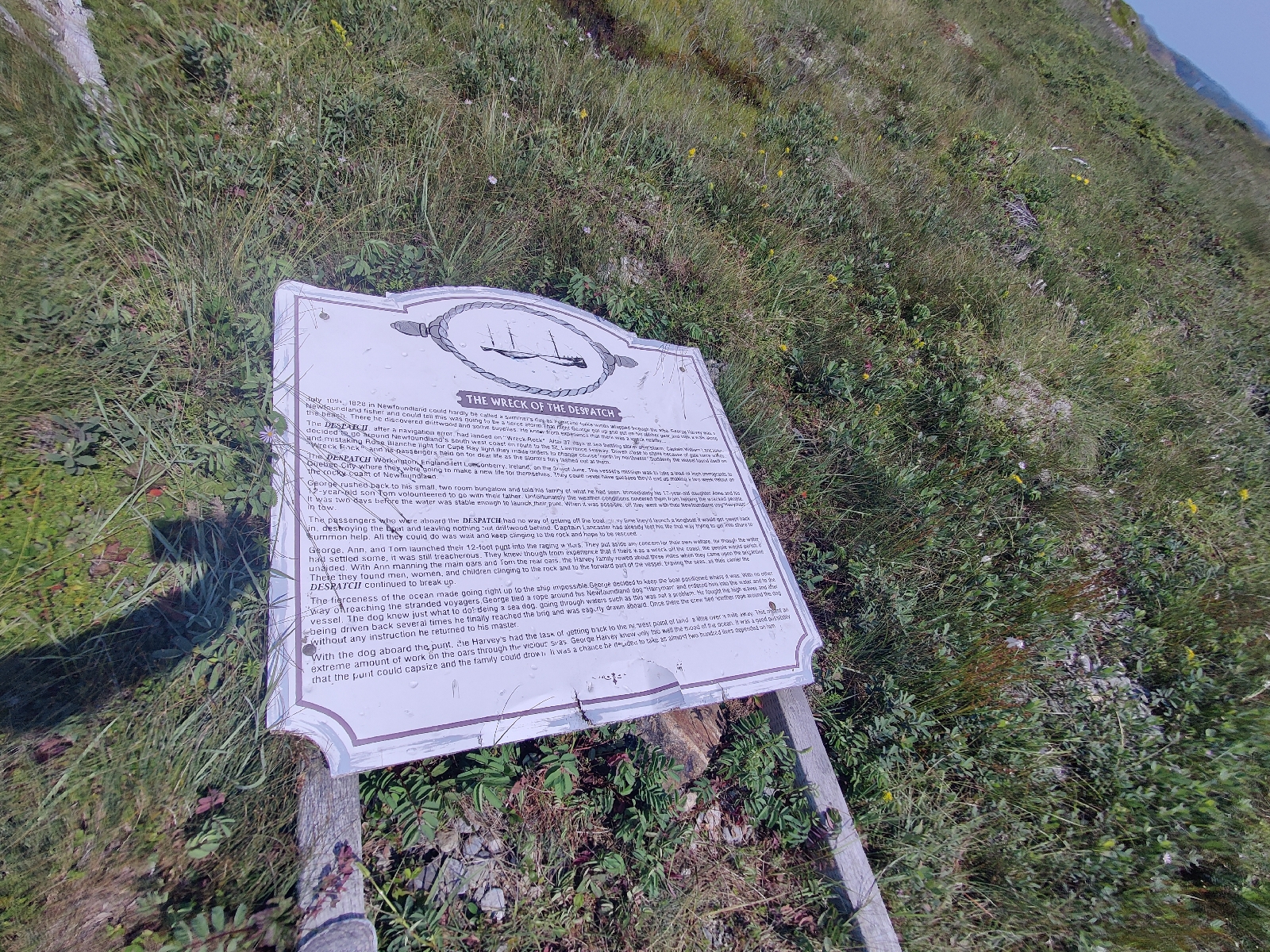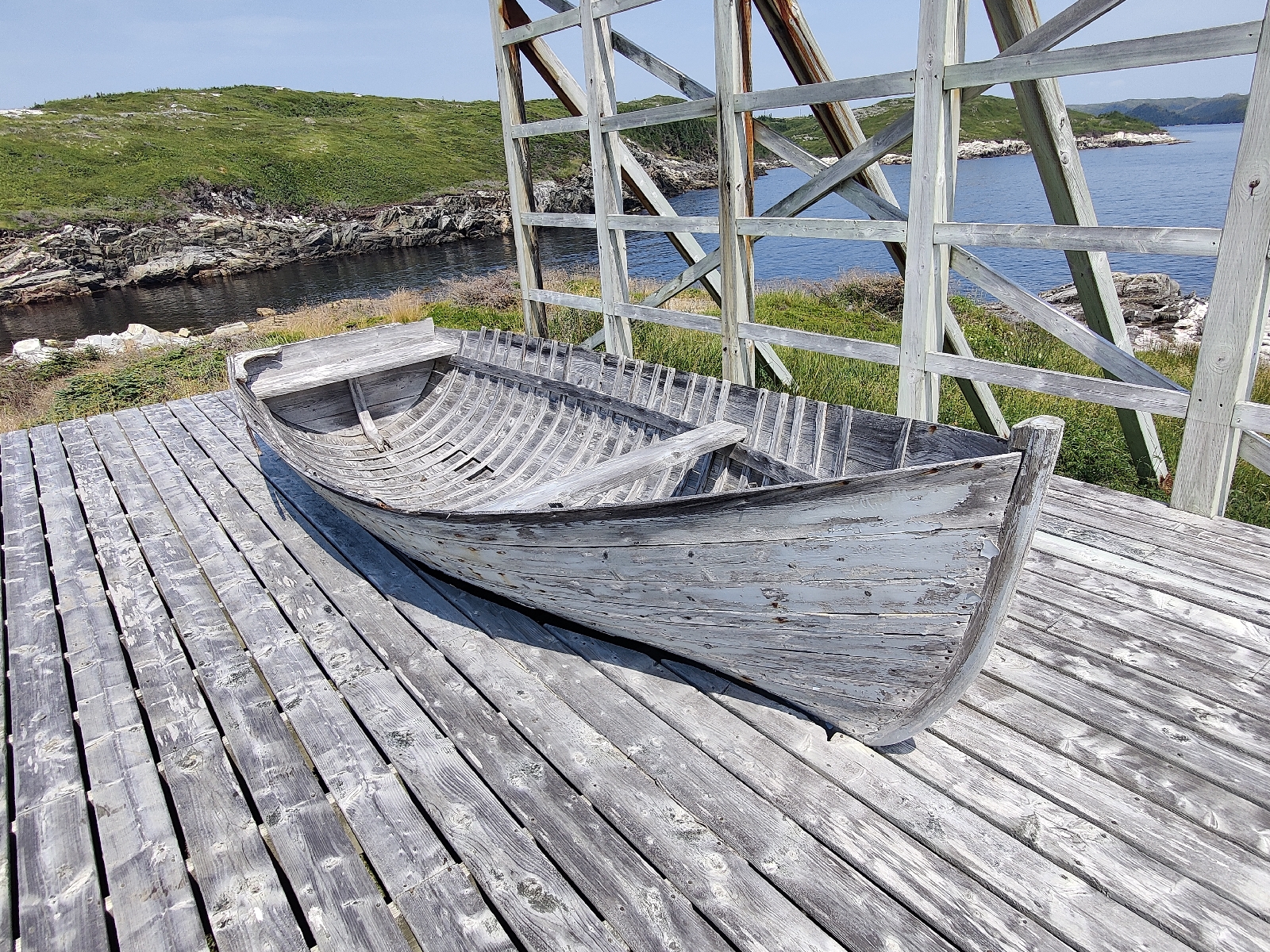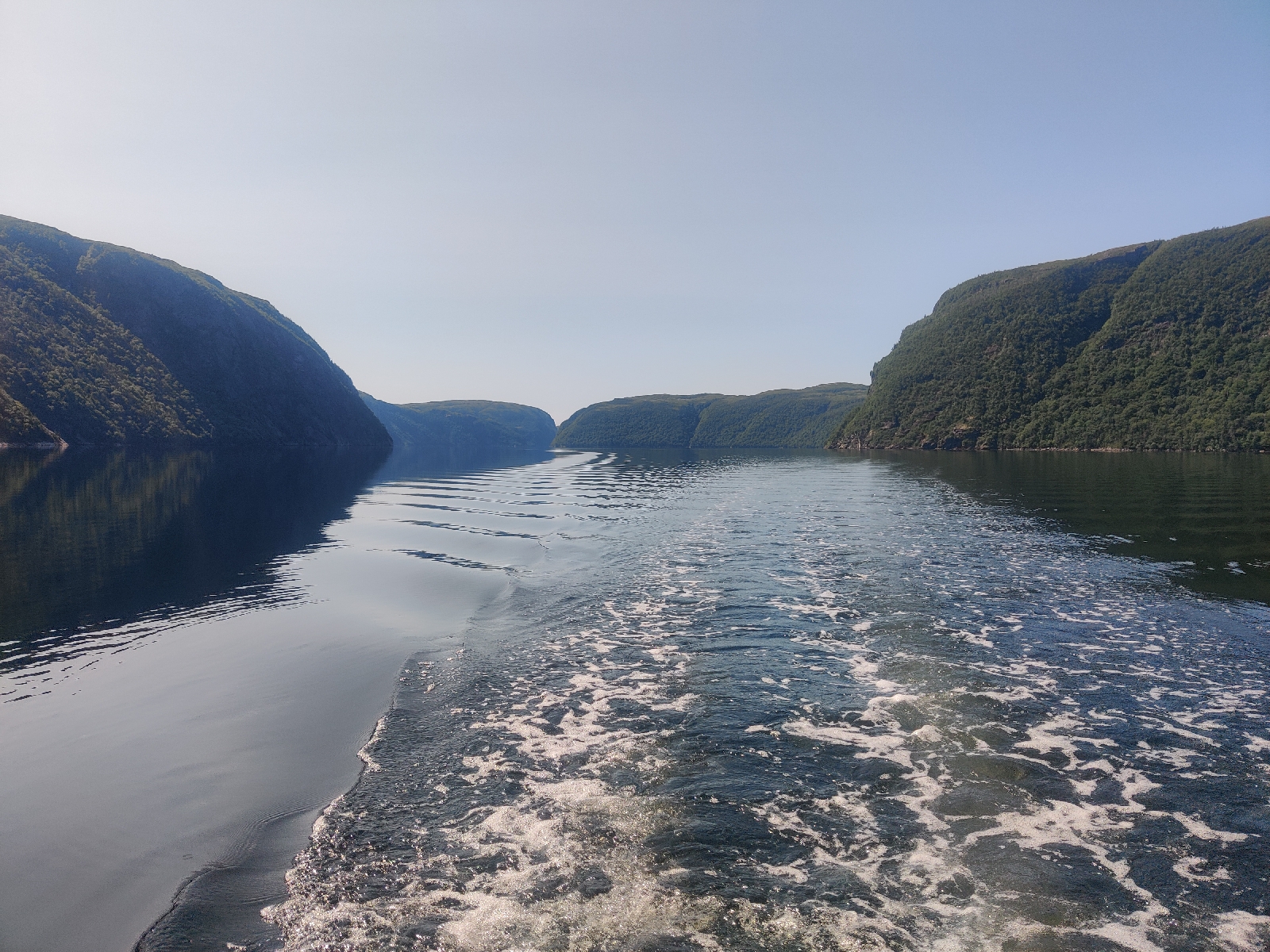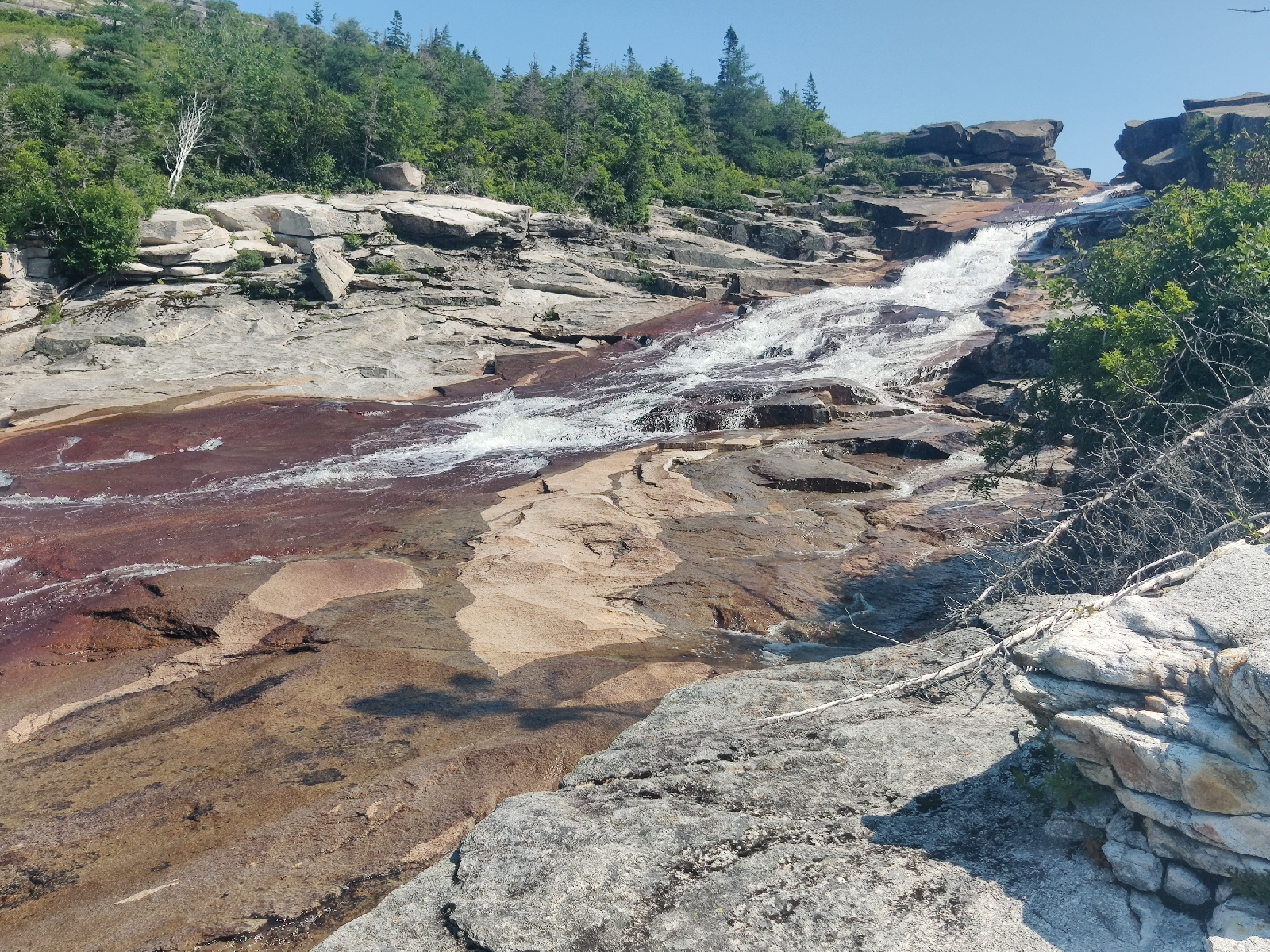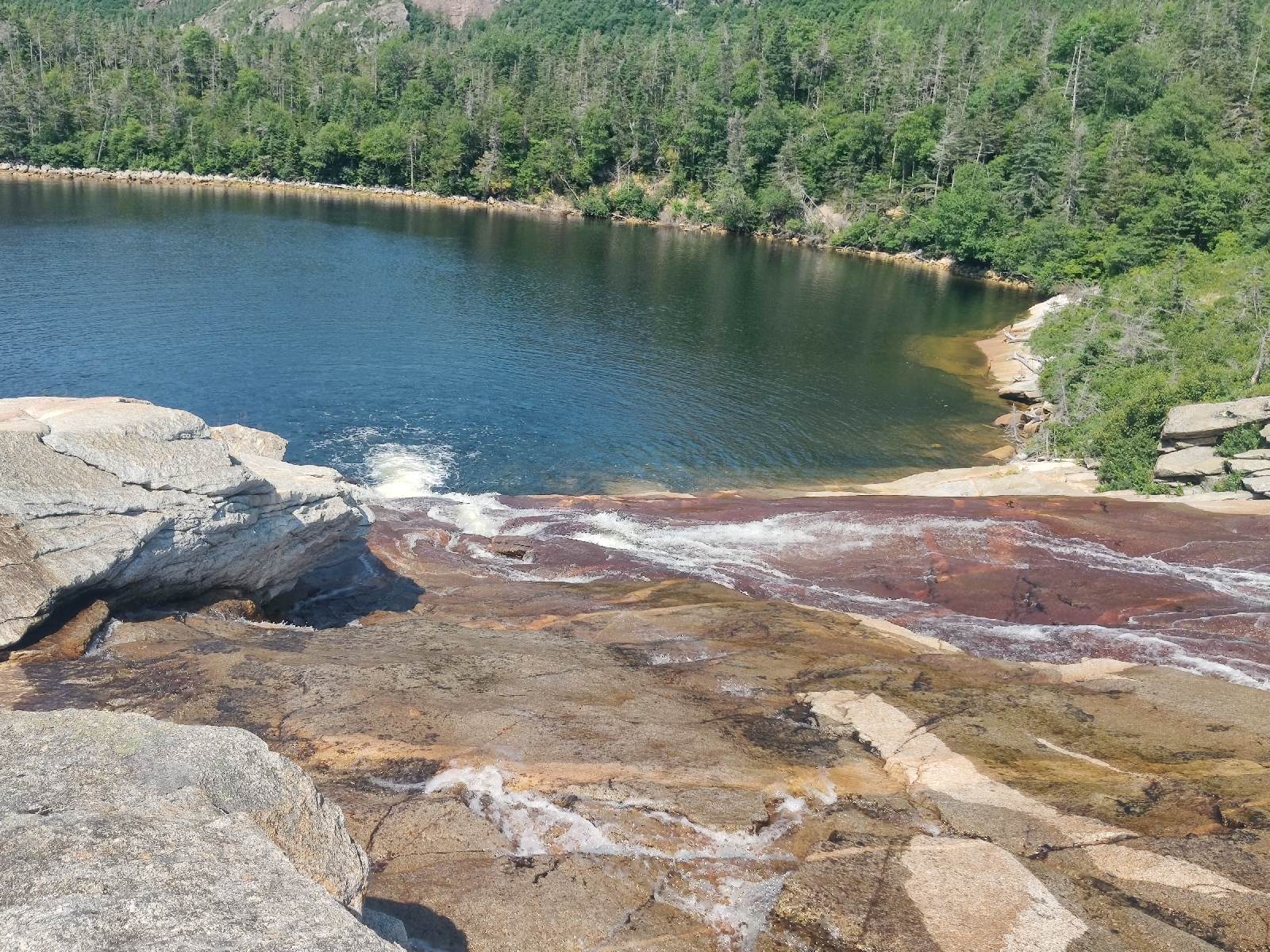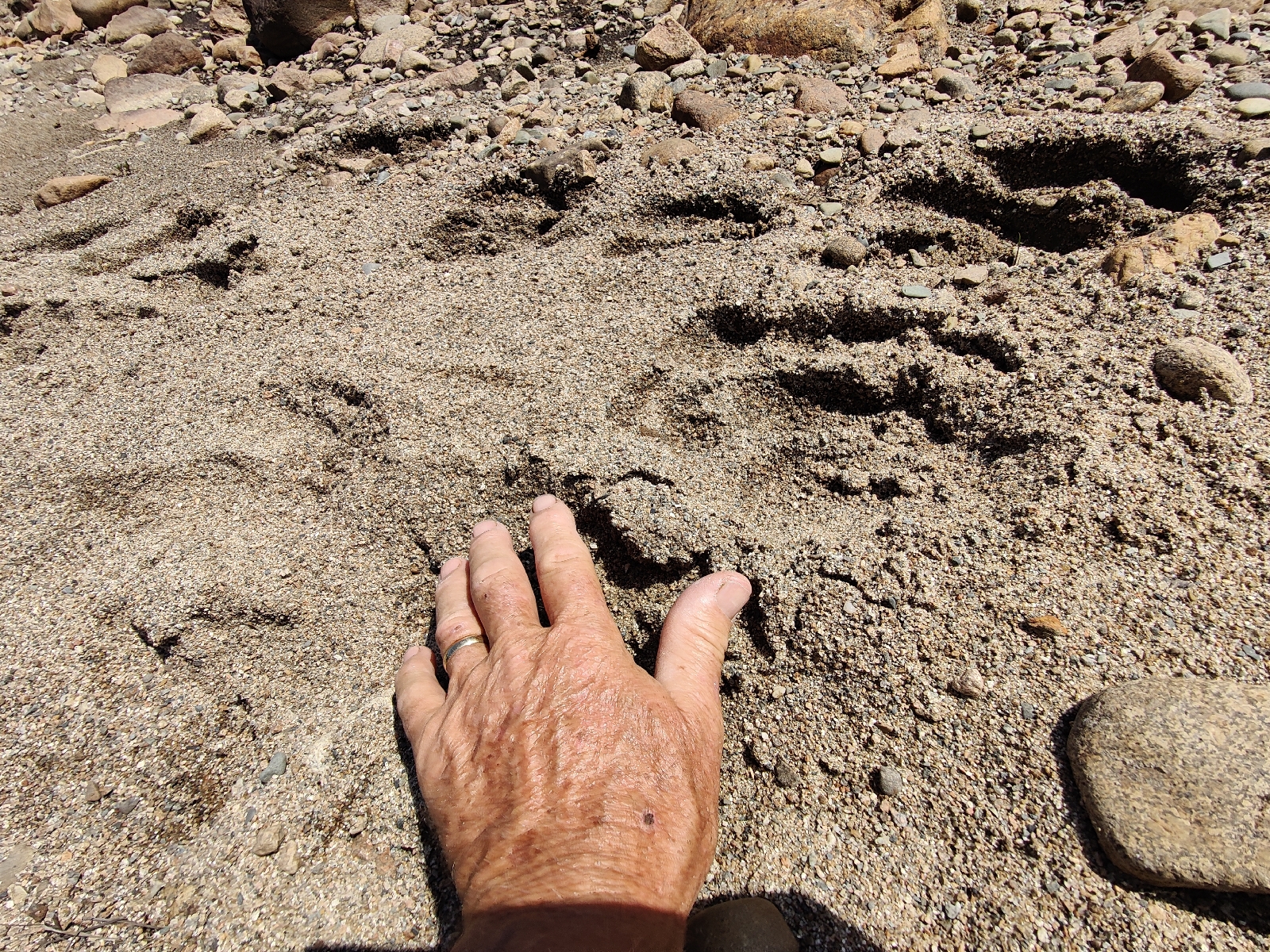I spent two nights at Otter Harbour and then left on 2nd August. "August already - hard to believe that in a couple of weeks, I'll be on a plane rather than a boat", I thought to myself. I weighed anchor around 2 p.m. and headed down Great Bras for Maskells Harbour some 20 or so miles further south.
We had a pleasant sail with the wind switching from one quarter to the other as it eddied down the narrow straight. We arrived at the very pretty Maskell's Harbour at around 1900 and dropped anchor just inside the narrow sand spit that provides excellent shalter. It was Friday and with the weekend approaching, there were already four or five other yachts in the harbour, but there was plenty of space to anchor without having to crowd anyone.
The next day - Saturday - it got quite busy with a number of local motor boats visiting from their base at nearby Beddek. I launched the dinghy and rowed across the harbour to the south side opposite the spit, and looked for somewhere to land. The CCA guide suggests taking a walk to the lighthouse but also says the land around the harbour is private. I found a spot that I thought would not be regarded as an intrusion and walked up a track to the lighthouse. It only took 5 minutes and there didn't appear to be anywhere else to go that didn't look like private property so I went back to the dinghy and rowed around the harbour. As I did so more local boats arrived. I passed quite close to one and ended up having a long chat with the friendly crew.
By the time I got back to the boat I had worked up quite an appetite and so had lunch followed by an afternoon snooze. Around 6 p.m. I took the dinghy out again and rowed the short distance to the spit....
...and walked its length to the ramshackled boat house at its base which the CCA Guide made a point of saying was private.
It didn't look like it had been used for years however and was in a very derelict state. I was puzzled by its position given the apparent lack of access from landwards but then discovered a very overgrown track covered in gorgeous wild flowers behind it, that wound its way up the wooded hill.
I followed it upwards for twenty minutes or so until it met another track that was clearly in use and which I summarised, must join with a proper road fairly close by. By the time I got back to the spit, many of the locals had left, but a gaggle of youngsters with two jet skis and a small speedboat had set up 'camp' on a small beach near Bonny and were having quite an exhuberant time. It spoilt the peace and quiet of 'my spot' but they had just as much right to be there as I did and thankfully, just as I had concluded that the gathering gloom meant they must be staying the night, they left. Even at jet ski speeds they'd be hard pushed to get back to Beddek before dark, I thought, and I hope they don't run out of fuel.
Back on Bonny hoisted the dinghy back on deck in preperation for departure the next day - Sunday. It would be the last short leg (about 25 miles) of the cruise with St Peter's being Bonny's last port until next year.
I got the anchor up around 10 a.m. the next morning and motored towards the lifting Barra Straight Bridge, a few miles down the Great Bras. It's a very slick, yacht friendly operation. One simply has to call the operator up on the vhf about half a mile out and he has the bridge lifted by the time one arrives.
A yacht went through in the opposite direction just before I arrived and so I expected to have to wait around for a while, but no, despite having to close the bridge to road traffic twice within 10 minutes, that's exactly what happened. Something of a contrast to the Queensferry Railway bridge across the River Swale, back home. The last I heard, yachts could only go through when it opened for commercial river traffic. There's precious little of that around and so boats can end up waiting for hours to transit the bridge which makes planning a passage through the shallow tidal waters of the Swale, something of a lottery. It's not surprising that hardly anyone tries to do so anymore!
Anyway back to Great Bras. Once through the bridge I hoised full sail and we ghosted along slowly for a couple of hours. Eventually though the wind died completely and if I given I wanted to make St Peter's before dark, the engine went on. We motored on across the widest expanse of the lake for the next couple of hours until a fitful breeze on the nose enticed me to try sailing once more. Eventually, it settled down into a respectable breeze, still on the nose and now we had a maze of islands and narrow channels to work through. I decided to make the most of my last day on the water and committed myself to sailing the rest of the trip provided there was wind and sufficient daylight. We only had about 15 miles to go and although we'd probably have to sail getting on for double that distance, there was still 8 hours of daylight left, so we had a reasonable chance of making it under sail.
The first 'squeeze' was the channel to the west of Doctor Island. I tacked into it a little too early and had to scrape across the shallows before the next tack. The next pinch point was the neck between Carters Point and Macleans Point which required a very short tack in order to get through. Next was the entrance to the passage south of Beaver Island. Fortunately the wind veered a little which allowed us to squeeze through hard on the wind but without having to tack. Finally, however, we ran out of wind and space at the Beaver Narrows. High ground on either side made the wind very fluky and the channel was only a couple of boat lengths wide and so reluctantly resorted to the engine to motor through the narrows and on to St Peter's less than a mile away, where at 6.30 p.m. I picked up a mooring in preperation for moving into the marina the following day. As I did so I heard a shout. It was Michael and Sabine on board Bleubeere moored in the marina. I had last seen them in Halifax!
The next morning (Monday 5th August) I topped up with diesel at the fuel dock and then went into the Marina to get the boat ready to hauling out on the Wednesday. Before that though, I whiled away the morning over coffee and with Michael and Sabine aboard Bluebeere as we caught up with eachother's travels over the previous few weeks. They had also arranged the evening's social event - we were to be the guests of fellow OCC members, Bernd and Christine aboard their custom built, Van de Stadt designed, 50 foot Aluminium, Expedition boat "Infinity" moored just across the way from Bonny. After leaving Halifax (which is where they had entered Canada) they stopped off more frequently than Vince and me and initially sailed westwards to visit Liverpool, Shelburne and Lunenberg before resuming a more liesurely eastbound cruise along the Nova Scotia coast. They had as a consequence, arrived in St Peter's only a few days before me.
Back on Bonny my priority was to prepare the mast for lift out. This would be the first time I had had the mast lifted since acquiring the boat and I wasn't looking forward to it. The mast is held in place by it's 'standing rigging' - a network of 9 steel cables, each of which is tensioned by a bottle screw at it's base and each of which is locked in position by pins which prevent it from unscrewing itself. My job, in advance of the lift, was to remove the sails and boom from the mast and then remove all the pins from the bottle screws so that the rigging could then be removed quickly once the mast was supported by the yard's mast crane.
Removing and packing up the sails was the first job and a bit of a handfull and turned out to be a bit of a handfull on my own. Thankfully, Berned noticed the sails were getting the upper hand and came over to help even out the odds. By the time we'd got the sails packed away I'd had enough for the day.
Later on board Infinity, I overheard Bernd talking to Michael about a job that needed doing at the top of Infinity's (very tall) mast - the re-installation of a special camera. Perhaps a little foolishly, I volunteered for the job and so the next day saw me suspended at an alarming height from the top of Infinity's mast with a bucket, a few tools and a state of the art and very expensive camera. Fortunately, I didn't drop anything and was able to successfully install the camera. It performs much the same function as the camera/sensor systems on modern cars by providing the helmsman with a view of what would otherwise be significant blind spots as they pilot the boat through a crowded anchorage, narrow channel, or marina. Coupled with both a bow and stern thruster, makes manouvering the large boat in crowded waters, much less nerve wracking than it would otherwise be. A few days later I waved them off as they continued their cruise up the lake and it was quite surreal to watch 50 foot of boat move sideways off the fuel dock against an on-shore breeze!!
I was invited for a gorgeous fish dinner that evening as a thank you. Then after dinner I hot footed over to Bluebeere for drinks hosted by Michael and Sabine. Their other guests were their neighbours - a delightful couple who had just sailed down from the Great Lakes, via the Gulf of Saint Lawrence - and John van-Schalkwyk, OCC Port Officer for Halifax who, along with his lovely wife, Heather, had hosted such an enjoyable evening at their home in Jeddore Harbour some weeks previously.
The next day, Tuesday, I had to complete the preperations for removing the mast. Unlocking the bottle screws was straightforward enough. The next job though was to disconnect the various electrical and electronic cables that run through the boat and up the mast. These include the cables for: the various navigation lights, the vhf radio antenna, the (currently defunct) AIS antenna; and the radar. Some of the cables for the lights already had joins in them below decks and so they were easy to deal with. One, ran all the way back to the fuse box in one piece but cutting that was not an issue - it could easilly be re-joined like the others. The cable for the vhf was also in one run but after removing the jack connector that went into the radio, I was able to pull the cable through the internal truncking and then up through the deck gland. That left the multi stranded Radar cable. The end that plugs into the chartplotter display has a very bulky plug on it which I knew would be impossible to pull through the trunking and/or deck gland and the other end runs through a waterfproof gland on the radar dome and is connected inside the dome via multiple connectors. After inspecting the installation (half way up the mast) I concluded that the prospects for removing the dome cover, disconnecting the multiple connectors and extracting the cable through the waterproof gland without damaging or losing something, were not at all good. That left only one option. I would have to cut the cable below deck and re-join the various strands once the mast is re-stepped! It was the last bit that concerned me most. Radar connections are notoriously sensitive and must be of the highest quality in order for the screen to display a useable echo picture. After agonising for hours I finally cut the cable!
Lifting the mast out was a little nerve wracking but the yard team clearly knew what they were doing and with the help of a few other boaters, the whole operation went smoothly and the mast was soon lying on four trestles alongside the dock and a number of willing hands helped me tidy up and secure the various bits of rigging to the mast in preperation for moving it onto the nearby storage wrack where it would remain for the duration of the lay-up.
That evening Bonny was extracted from her natural habitat by a fearsome looking truck and trailer and moved to her new home at the back of the marina's boat storage area.
Over the next week or so I worked through a succession of jobs to prepare the boat for over wintering in below freezing temperatures. It's suprising how many systems and provisions contain water which either needs to be jetisoned or replaced with an anti-freeze mix....On my last morning I suddenly realised that I would need to donate my remaining stock of beer and soft drinks to the marina. What about the Gin and Rum - would that survive? I'll let you know next May!








